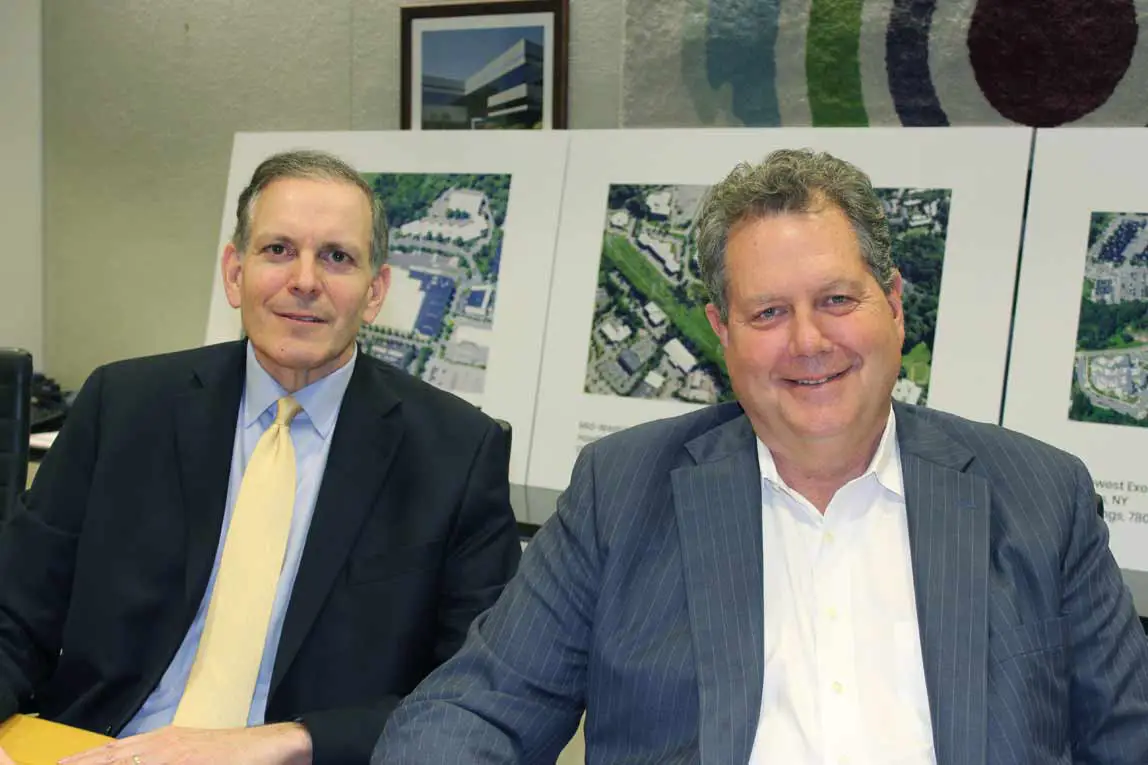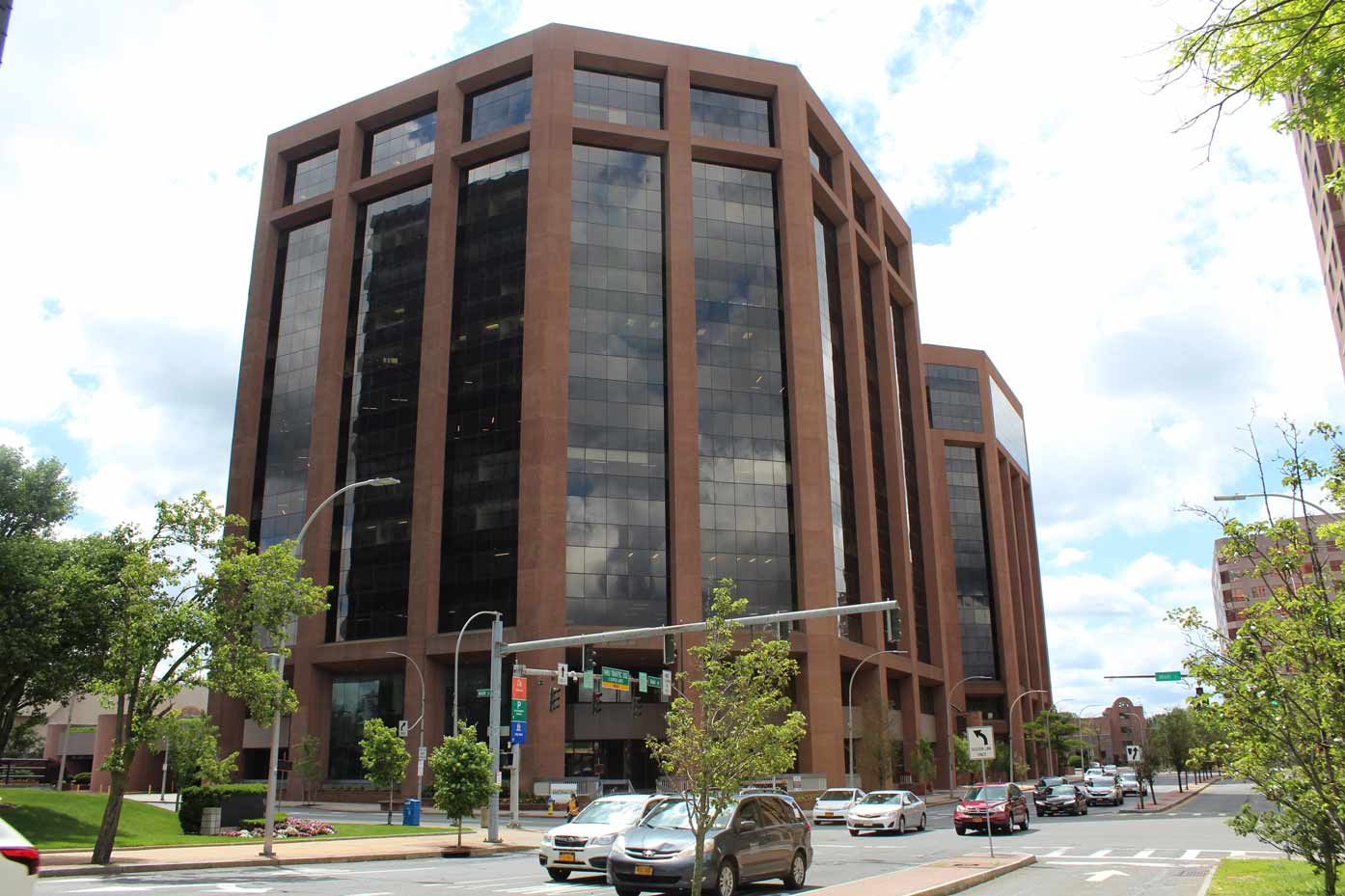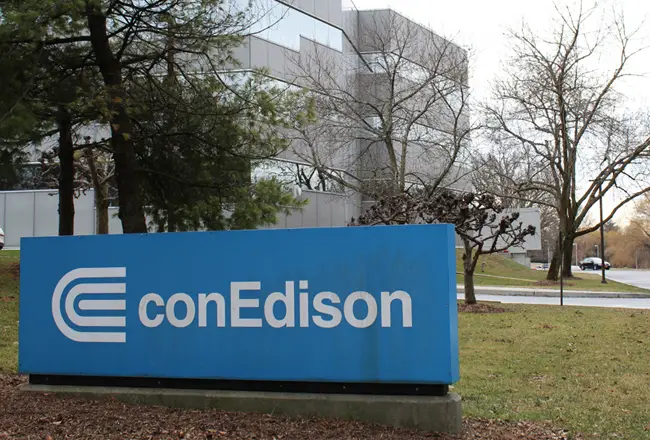
Robert Martin may be a six-decades-old iconic real estate company, but CEO Tim Jones and Greg Berger, managing director and partner, believe that diversification has a role to play in the company”™s future. They discussed their half-billion-dollar purchase of a commercial portfolio from Mack-Cali, future development plans and other subjects with the Business Journal recently in the glass-walled conference room at the company”™s 100 Clearbrook Road headquarters in Elmsford”™s Cross Westchester Executive Park.
Founded in 1957 by Robert F. Weinberg and Martin S. Berger, Greg”™s father, the company grew to become a significant name in Westchester residential and commercial real estate. Martin (Marty) Berger passed away in 2011. Weinberg, who is president of the company, remains active and development-focused at age 90. “Bob”™s supportive of everything, the partners and everything we do, and he”™s still a visionary and we give him all the respect in the world,” Greg Berger said.
Although focusing on single-family residential development early on, it soon moved into commercial real estate, sometimes in cooperation with other developers. For example, the Crossroads Shopping Plaza on Route 119 in Greenburgh was built in the late ”™70s with the Heyman Organization, a shopping center operator in Connecticut.
The company played a major role in urban renewal in White Plains, and Weinberg and Berger were publicly praised by the late White Plains Mayor Alfred Del Vecchio with helping to revitalize the city, not only by building their buildings but also contributing improvements to the city”™s infrastructure. Not so welcome, however, was a $500 million development proposed in 1984 in conjunction with New York Hospital-Cornell Medical Center for part of the hospital”™s 234-acre White Plains property which would have included three 20-story office buildings, 2,300 apartments, a 500-room hotel, stores and more. Amid loud community opposition, the city”™s Common Council rejected the idea. The Westchester Financial Center, which was completed by Robert Martin in 1986, to this day is praised for having injected new life into the city”™s downtown. It now is owned by Ginsburg Development Companies and is being repositioned as “City Square.”

The company made headlines recently when it bought a portfolio of 56 buildings in Westchester, totaling 3.1 million square feet, from Mack-Cali. The $487.5 million transaction was said to represent the largest suburban real estate portfolio sale in the New York City area in more than 15 years. And if the properties seemed familiar to everyone at Robert Martin, that is because they were part of the package in 1997 when Robert Martin Company was acquired by Cali Realty Corporation in a $450 million transaction.
“When we sold all those years ago, it was the right thing for us to do at the time and when we did so, most of us went to work for Mack-Cali,” Jones said. “In fact, Greg and I both went to work there and Greg was there for about three years and I was there for about seven years.”
Jones said that it was a period when there were questions about what the Robert Martin Company would continue to do. “Bob and Marty stayed here along with a much smaller staff and we focused more on the land portfolio than the existing assets, even though we still had investments in a couple of million square feet and were not the active managers at that point,” he said.
”This portfolio that we just acquired is over half the market of the industrial space in the county, so for us it was a great opportunity,” Berger said. “It always stayed occupied. It”™s probably never been below 90% occupied.”
The purchase included the Cross Westchester Executive Park in Elmsford, the Mid-Westchester Executive Park in Hawthorne and the South Westchester Executive Park in Yonkers, along with the Stamford Executive Park in Connecticut. RMC Acquisition Entity LLC was the vehicle used and mortgage banking firm Holliday Fenoglio Fowler L.P. worked on placing a floating-rate loan with Bank of America.
“We coveted these properties. We would have been happy to buy them back almost at any time, particularly the parks,” Jones said. “Even though they were built in the ”™70s and ”™80s, most of the buildings are single-story industrial and flex buildings. That single-story space in this land-constrained market just doesn”™t become obsolete, and there”™s a real demand for it today.”
Jones said that while most people associate the company with Westchester, it also is active in Connecticut. He said that there are about 300,000 square feet spread among five buildings in the Stamford park. “We actually also have an investment in another flex park in Stratford and land in Stratford as well. In Connecticut, we have about a million square feet that we”™re involved with, not only in Fairfield County, but also up the line in Hartford County as well. The buildings in Stamford probably have the most repositioning or development potential of any buildings in the portfolio today,” Jones said.
Berger explained that building the company”™s portfolio and activities has coincided with increasing the company”™s staff. “We”™ve doubled the size of our company so we have a good, strong platform,” he said. “We do everything here, sort of a one-stop-shop approach, and that”™s the way Robert Martin was built, so if a tenant or a deal came in we could take it in from ”˜A”™ to ”˜Z.”™ ” Berger explained that as company leaders, “I oversee the operations, management. We both get involved in construction. Tim is more involved in the finance and we both get very involved in the acquisition process as well and both take an equal role in overseeing our accounting department, but there are a lot of assets and a lot of people to oversee and we complement each other pretty well, I think.”
“Bob and Marty ran the company with a very high standard of ethics and that”™s continued,” Jones added. “We continue to try to treat our handshake as a contract.”
“I think Bob and Marty”™s reputations are really impeccable. Philanthropic, civic, community,” Berger said. “I think that”™s transitioned to Tim and myself overseeing the company.” He said that as they went through the list of tenants at the executive parks acquired from Mack-Cali, they discovered that about 25% were holdovers from the time Robert Martin originally owned the properties.
When asked how he defined the company today, Jones said that while it”™s still primarily a real estate investment and development company, “We also make investments in other businesses. We are involved in about 6 million square feet of buildings, mostly in New York suburban markets, but in other markets as well: Florida and some other places in the Southeast. We”™re the biggest Dunkin”™ Donuts franchisees in the Carolinas.” They have 53 franchises with 12 under contract.
Jones said they had been involved in the electricity marketing business with a company which would buy power wholesale and sell it retail. ”Ultimately, the company was in 14 states and had revenues of about $300 million,” he said. “It was a very competitive niche business that started because of deregulation.” Jones said they built up the business and sold it to a competitor.
“We”™re still predominantly a real estate company,” he said. “We have what we call full-service, in-house construction, planning, architectural planning, development approval, then property management and leasing.”
Jones pointed out that with the Dunkin”™ Donuts franchises, “We do own some of the real estate and there are complementary skills with Dunkin”™ Donuts for site selection and development of the buildings, but we really did it because it”™s a cash flow business as opposed to a capital business, so it balances well for us.” He explained that the returns that you get from a fast-food business can be higher, but you don”™t have the long-term asset creation you do with real estate. “That also was a lesson from Bob and Marty because they had a bank that they controlled during their real estate development years and that again was a good balance. It was more of a cash flow than an asset creation,“ he said. The bank was the City and Suburban Federal Savings Bank.
High on the list of future plans is making upgrades to the newly acquired properties. “The buildings have been around for a while and they frankly need a little more tender loving care than they”™ve received. We”™ll have eight figures of capital improvements we”™ll make to the buildings, most of which you won”™t see from the street: roofs, some HVAC, parking lots and things like that,” Jones said.
“We”™re still looking for other acquisitions that we hope to make,” Berger said. “Nothing is imminent, but we”™re going to continue to be active.” He said they have a property in the Westmoreland neighborhood of White Plains with which they might do something. Jones added, “We have a considerable amount of land in Yonkers. We can do more industrial and we”™re talking to a couple of industrial and operating-type users. We have on White Plains Road a site. It”™s an office building today. Our expectation is to reposition it into a mixed-use health club/self-storage building. We have a site in downtown White Plains which could accommodate a motel at some point, on Bank Street, just about a block from the train station.”
Even though the company owns about 6 million square feet, Berger and Jones see it as a family business that happens to have a powerhouse portfolio. “We”™ll be disappointed if they didn”™t say ”˜they kept it going the way they should have,”™ ”™”™ Jones said.















